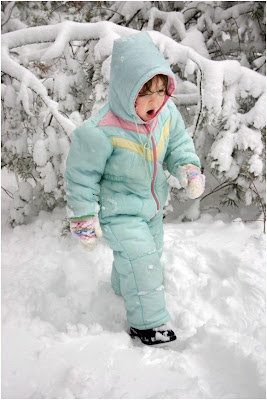Why people pay good money to belong to a gym is a mystery to me. Parenting provides all the aerobic exercise I can handle. Take my recent snowy "vacation" morning:
8 a.m.: Chase dog down main street after youngest child leaves the gate unlatched (again).
8:45 a.m.: Struggle through Olympic effort to clothe children in snowsuits, mittens, hats, scarves, coats, and boots.
9:15 a.m.: Walk to sledding hill, pulling sled and pushing stroller (everyone on the block knows I'm Nature Girl—can't be seen increasing carbon footprint by driving 3/4 mile).
10:45 a.m.: Hurtle downhill into marsh on purple sled with toddler. Climb up big hill. Repeat 100 times.
11:30 a.m.: Walk home, uphill all the way, pushing stroller and pulling sled with frostbitten kindergartner on board. Distance seems to have doubled.
Noon: Collapse in sodden heap by door, covering ears to the plaintive cry of "What's for lunch?"
See what I mean about aerobic exercise? And thanks to winter's chilly temperatures, outdoor play means calories are burned at breakneck speed. No gym membership required. There are so many fun ways to explore nature in winter. You and your child can draw snowy pictures with a stick, look for birds' nests among bare branches, search for animal tracks in slushy mud, or use a camera to capture icicles and cool winter light. Running will keep little ones warm, and huddling near a thicket will demonstrate how animals shelter from the cold.
Even if braving cold weather is not your style, it's still possible to engage your children in wintry play. A bowl of ice cubes provides much entertainment and a science lesson: Why is the ice getting wet? Can you see through ice? Does ice have a smell? A taste? What color is ice? Freezing chunks of fruit in ice cubes provides insight into what it's like for animals to find food in winter. Frozen berries are more difficult to smell than fresh, have less taste, and are difficult to eat. This is one reason squirrels bury nuts in the fall: buried nuts taste better than ice-glazed nuts.
Need a discliplined approach to getting outside? Sign up your preschooler or homeschooler for a winter nature class at the Arboretum. Programs begin the first week of February. Click here for more information and to register. Fresh air and exercise are guaranteed, with nary a sweaty rowing machine in sight.
By Jenny Houghton
Youth Program Coordinator


